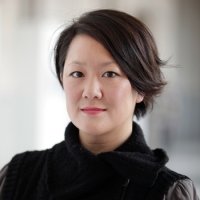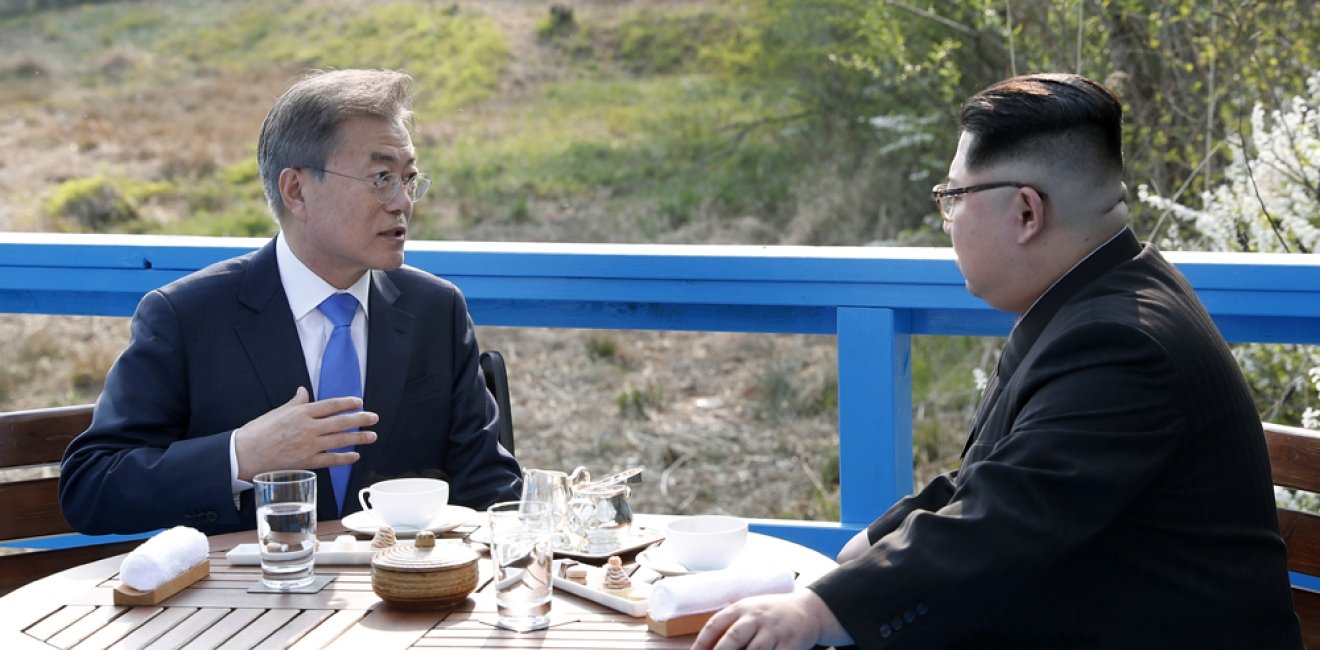
A blog of the Indo-Pacific Program
In the month since the Singapore summit where U.S. President Donald Trump and North Korean leader Kim Jong Un made history with a handshake, much of the focus in Washington remains fixed on the question, and definition, of the leaders’ pledge to carry out “the complete denuclearization of the Korean Peninsula.” Trump’s team is calling for the unilateral denuclearization of North Korea, while Kim’s negotiators insist that both sides must destroy their nuclear capabilities, not just North Korea. The divergent definitions underline what many of we longtime Korea-watchers had predicted: the U.S.-North Korea negotiations will be lengthy and complicated.
But in Seoul, South Koreans aren’t wasting time defining denuclearization: They are pushing ahead with plans for reconciliation with North Korea — with or without the United States.
I spent nearly a decade in Korea, both North and South, arriving in Seoul in September 2008 at the tail end of the so-called Sunshine Era of warming ties between the two Koreas. A new, conservative president, Lee Myung-bak, had taken office in the Blue House earlier that year with tough, zero-tolerance policies on North Korea, and one by one, joint economic projects hatched under previous progressive South Korean administrations were shut down at the president’s orders.
For nine years, South Koreans were subject to a virtual blackout on interaction with North Koreans. South Korea’s outdated National Security Law blocks and prohibits its citizens from directly accessing North Korean websites (and in some cases, foreign websites about North Korea), and law prevents South Korean nationals from interacting with North Koreans without government permission. The conservative government’s policy was to isolate and demonize North Korea, as Pyongyang continued to breach international agreements by illicitly building and testing ballistic missiles and nuclear weapons.
But in Seoul, South Koreans aren’t wasting time defining denuclearization: They are pushing ahead with plans for reconciliation with North Korea — with or without the United States.
When Moon Jae-in took office in Seoul in 2017 as the first progressive president in nearly decade, he faced the mindboggling challenge of reining in a defiant North Korea determined to become a bona fide nuclear power while implementing a platform that called for re-engaging the North Koreans. Throughout 2017, the first year of his presidency, he had to map out a way to carry out these campaign promises while remaining on good terms with a U.S. president engaged in an escalating war of words with the North Korean leader, and an administration leading a campaign to impose strict sanctions on Pyongyang.
President Moon also faced the challenge of how to convert public perception of North Korea, which is key if he is to build and maintain popular support for his engagement policies. He was savvy in using the Winter Olympics as an opportunity to engage the North Koreans; a visit by Kim Jong Un’s younger sister, Kim Yo Jong, was most South Koreans’ first real look at a member of North Korea’s mysterious ruling Kim family, and the South Koreans were smitten.
Kim’s first summit with Moon inside the DMZ — the first covered live by foreign media — humanized a leader who until then had been more caricature than man for South Koreans. Many South Koreans tell me there were moved by the sight of Kim grasping Moon’s hand; seeing the two men chat easily was a powerful visual that reminded them that they share the same language and heritage as North Koreans. While many South Koreans remain unsure about North Korea’s true intentions on denuclearization, polls show their impression of Kim has improved immeasurably following the summits in the DMZ and in Singapore, giving Moon wide latitude to carry out his engagement policies.
During a recent trip to South Korea, I was taken aback by the stark difference in mood between Washington and Seoul.
While many in Washington remain skeptical, the overriding message put forth by the Moon government is one of optimism on inter-Korean relations. Every day while I was in Seoul, news outlets carried reports about fast-moving people-to-people engagement between North Korea and South Korea: a pact to field joint teams at the upcoming Asian Games in Indonesia, a basketball friendly between the two Koreas held in Pyongyang, a plan to send North Korean table tennis players to a tournament in South Korea.
Government bureaucrats, think tank analysts and corporate planners, meanwhile, are barreling ahead with ambitious long-term plans for joint projects, from railway links that envision taking travelers from Busan to Berlin to power grids to help light up electricity-starved North Korea. The railway project may not yet be rooted in reality — xenophobic North Korea is a long way off from agreeing to let foreigners pass through its country unaccompanied — but the plans serve as a reminder that South Korea is poised, prepared and impatient to implement economic projects with North Korea.
The South Korean government’s attitude right now is: Get on board or get out of our way.
One month after the Singapore summit, we’re still in the early days of U.S. negotiations with North Korea. Yet, while the U.S. and North Korean negotiators hammer out a timeline and roadmap, a process that will be long and complicated, South Korea is anxious to forge ahead with reconciliation projects. This is a country with a culture often summed up as “ppali ppali” — “hurry, hurry” — and not only impatient for change, but also intolerant of dissent.
The South Korean government’s attitude right now is: Get on board or get out of our way. The more protracted the U.S.-North Korean negotiations, the more potential for a gap between Washington and Seoul on North Korea policy, as South Korea makes moves to lift its sanctions to allow for economic partnership. A gap in coordination between the United States and South Korea, and dissonant policies on sanctions, is precisely what North Korea wants, as Pyongyang seeks to leverage growing inter-Korean unity without having to give up its nuclear weapons unilaterally. If Seoul and Washington do not coordinate closely, we may see the two Koreas reconcile — without any denuclearization on North Korea’s part.
Image: Republic of Korea/Flickr
The views expressed are the author's alone, and do not represent the views of the U.S. Government or the Wilson Center. Copyright 2018, Asia Program. All rights reserved.
Author

Journalist and former Pyongyang Bureau Chief, Associated Press

Indo-Pacific Program
The Indo-Pacific Program promotes policy debate and intellectual discussions on US interests in the Asia-Pacific as well as political, economic, security, and social issues relating to the world’s most populous and economically dynamic region. Read more


Hyundai Motor-Korea Foundation Center for Korean History and Public Policy
The Center for Korean History and Public Policy was established in 2015 with the generous support of the Hyundai Motor Company and the Korea Foundation to provide a coherent, long-term platform for improving historical understanding of Korea and informing the public policy debate on the Korean peninsula in the United States and beyond. Read more





